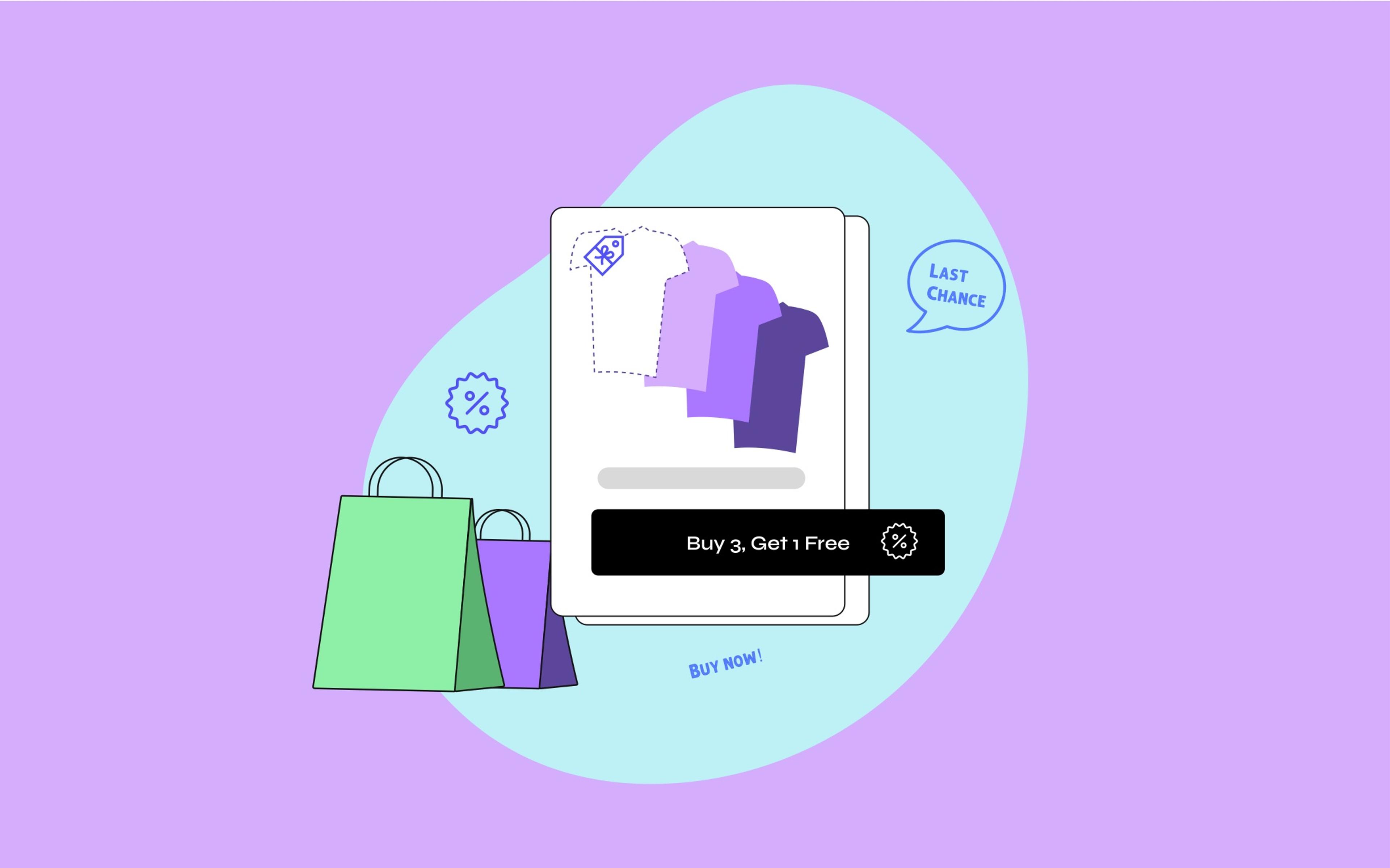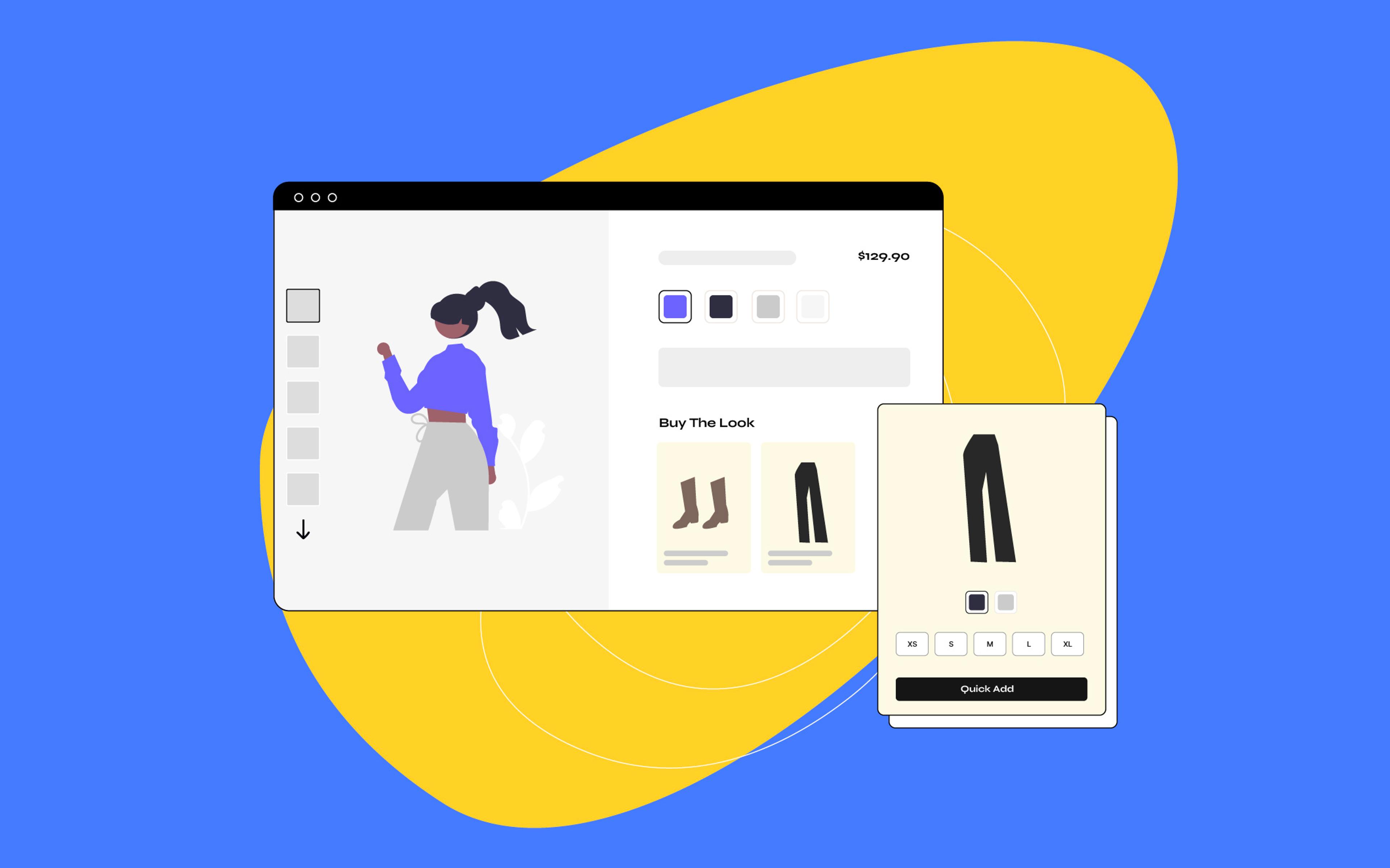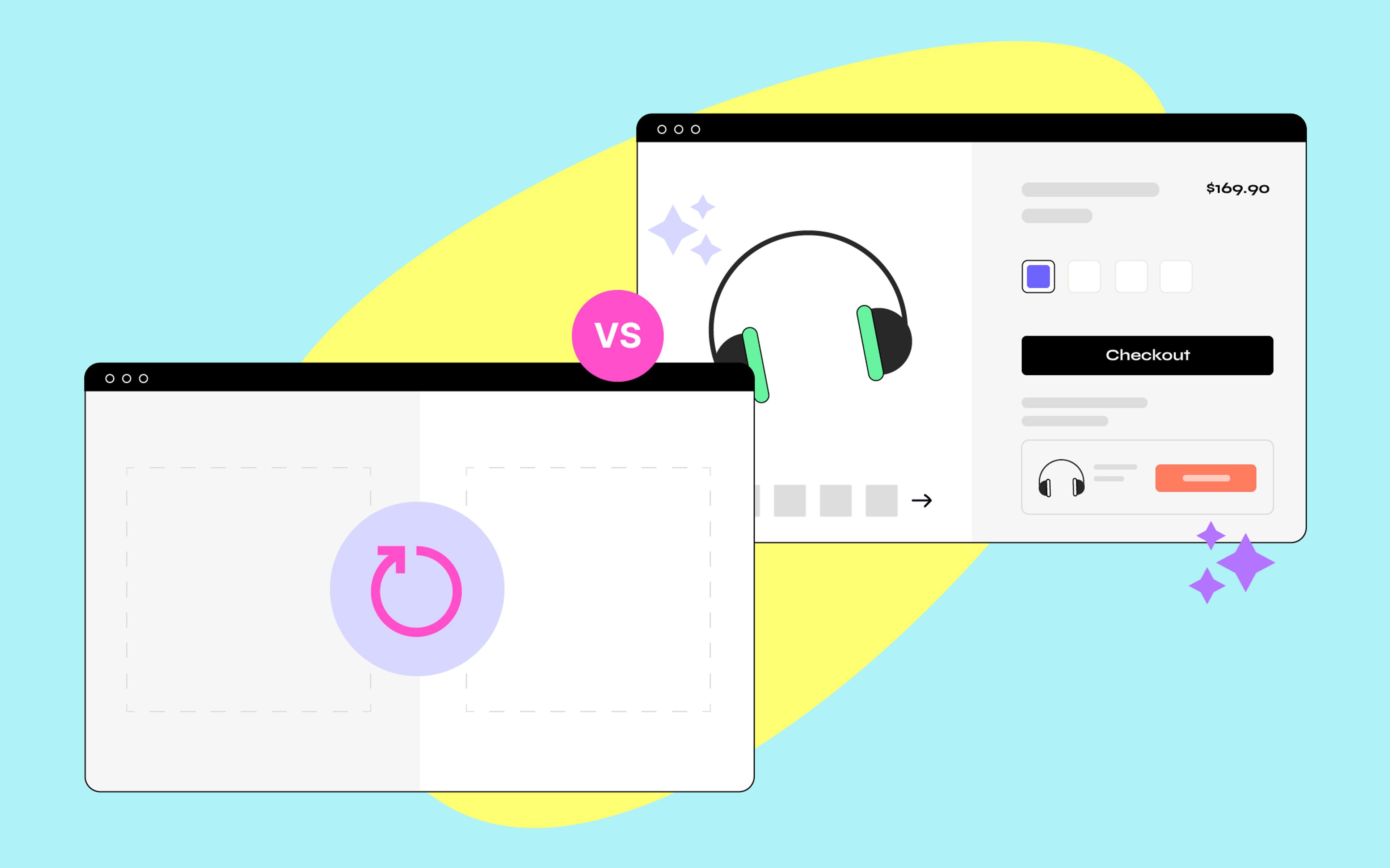For direct-to-consumer (DTC) brands, Black Friday and Cyber Monday (BFCM) are more than just shopping events; they’re a prime opportunity to forge lasting customer relationships, expand market presence, and drive brand loyalty. BFCM 2023 set new records, with Shopify merchants generating $9.3 billion in sales—a 24% increase from the previous year. This isn't just a period for bargain hunters; shoppers are keen to treat themselves, stock up on essentials, and find meaningful gifts for loved ones.
Smart DTC brands that offer personalized recommendations, exclusive bundles, and tailored shopping experiences can take full advantage of this critical period. By focusing on these strategies, brands can enhance the shopping experience, boost cart values, and nurture customer loyalty well beyond the holiday season.
In this article, we’ll delve into five key strategies DTC brands can use to optimize the user experience, increase sales, and strengthen customer relationships during BFCM.
1. Use Personalization to Build a Tailored Shopping Journey
BFCM is the perfect time to elevate the shopping experience with personalized recommendations. Shoppers are often on the lookout for items they've been considering for months, and by tailoring product suggestions based on customer preferences, you can significantly improve conversion rates.
To achieve personalization during BFCM, DTC brands can leverage the following strategies:
- Tailored Product Recommendations: Use browsing history and previous purchases to recommend products that align with a customer's past behavior. For instance, if someone bought skincare products last year, suggest complementary items they might appreciate this season. Relevant suggestions make it easier for customers to find what they need and feel understood by your brand.
- Exclusive Offers for Returning Customers: Rewarding returning customers with early access to sales or exclusive discounts fosters loyalty. This personalized touch can be a game-changer during BFCM, making shoppers feel valued and more likely to return for future purchases.
- Personalized Shopping Experience: Tailoring the shopping journey with custom landing pages for different customer segments enhances the overall experience. These pages can feature curated collections that align with the customer’s preferences, creating a more relevant and engaging shopping experience.


2. Increase AOV by Featuring Cross-Selling and Up-Selling Opportunities
The cart is a critical touchpoint for boosting the average order value (AOV). By implementing strategies like volume discounts, bundling, and upselling complementary items, DTC brands can maximize each purchase during BFCM.
- “More of the Same” Strategies: Capitalize on popular items frequently bought together, leveraging BFCM shoppers' tendencies to stock up. Offering volume discounts (e.g., "Buy 3, Get 1 Free") or bundling products is a great way to drive higher cart values.
- Complementary Product Suggestions: Highlight 2-3 complementary items based on what's already in the cart. For example, if someone is buying a skincare set, suggest related accessories or add-ons like travel-sized products. This makes it easier for customers to discover products that enhance their purchases.
- Tiered Free Shipping and Gift Incentives: Highlight how close customers are to free shipping or a gift incentive (e.g., "You’re only $20 away from free shipping!"). These small nudges often encourage additional purchases, enhancing the perceived value of the order.
- Mobile-Friendly Design: Ensure that upselling and cross-selling sections are visible on mobile devices without obstructing the user's view. Experiment with different methods, such as collapsible sections, carousels, or dismissible pop-up windows displaying relevant suggestions immediately after a customer adds an item to the cart. Monitor user engagement and adjust the design accordingly.

3. Provide Alternative Product Recommendations for Out-of-Stock Items
High-demand products sell out quickly during BFCM, leading to frustrated customers and missed sales opportunities. Offering alternative product recommendations is a proactive way to keep customers engaged and reduce the likelihood of abandonment.
However, the visibility of these recommendations is key—product recommendation carousels, while useful, can easily be missed if placed at the bottom of the page, particularly on mobile.
Here there are a few ideas, that brands should consider to leverage alternative products avoiding to miss any potential conversions:
- Anchoring Similar Items: implementing anchor links near the out-of-stock button (often disabled or converted to a “Notify Me when Available”) that direct customers to a section featuring similar items. This approach provides customers with immediate alternative choices, letting them discover deals on similar products.
- Display product recommendations near the buy section: Display alternative items near the “buy” button or in a non-intrusive pop-up when an out-of-stock product is selected. Make sure these suggestions are easy to find and relevant to the customer's browsing history.
- Non-Intrusive Pop-Up Recommendations: A pop-up window that recommends alternative products when a shopper encounters an out-of-stock item can save the sale. Ensure the pop-up is easy to close but remains accessible for the customer to revisit.
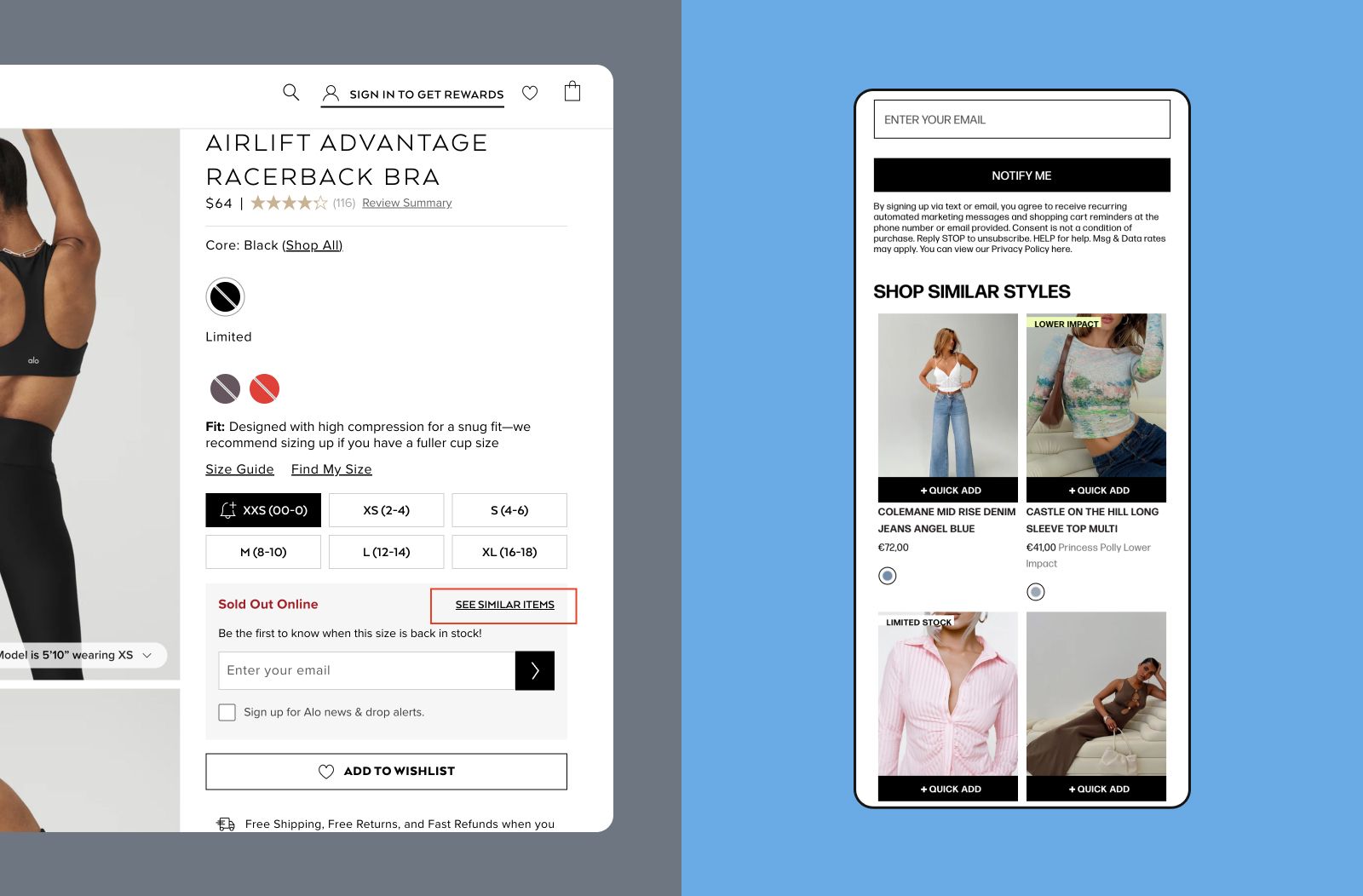
4. Show Delivery and Return Expectations to Reduce Customer Anxiety
Clear communication is key to preventing cart abandonment, especially during the BFCM rush. By setting clear expectations around delivery times, shipping costs, and return policies, you can reduce anxiety and encourage purchases.
Since gifting remains a significant element of the holiday shopping season, consider improving the shopping experience for gift-givers by implementing these key insights.
- Transparent Shipping Costs: Display shipping costs upfront, ideally on the product page or in the cart. Surprising customers with hidden fees during checkout is a surefire way to lose them.
- Order Cutoff Dates: Ensure customers know when they need to place orders to receive them on time, particularly for gifts. Prominent banners or product page messages like "Order by December 10 for guaranteed delivery before Christmas" give customers confidence in their purchase.
- Extended Return Policies: Offering an extended return window for purchases made during BFCM reassures customers that they can buy gifts without worrying about strict return deadlines.
- Order Tracking: Providing detailed tracking updates helps ease customer concerns about delivery times during this busy season. Clear tracking information can make a significant difference in the overall customer experience.
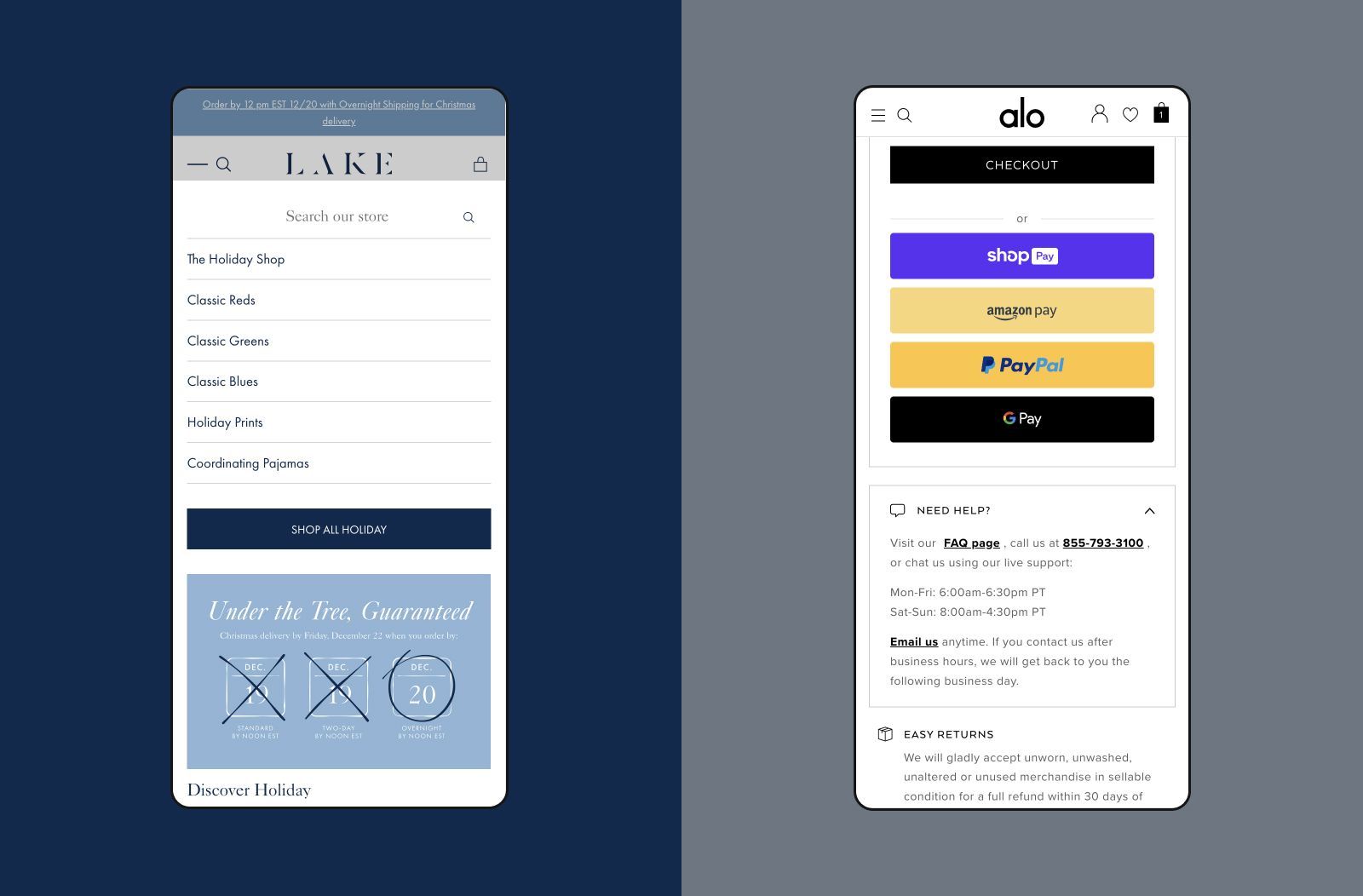
5. Provide an Optimized Experience to Mobile and Desktop Users
During BFCM 2023, while mobile transactions were significant, desktop shoppers displayed higher conversion rates and average order values (AOV), particularly in industries like Fashion, Jewelry, and Home Decor. This trend suggests that many shoppers turned to their computers for focused sessions, whether they were stocking up on essentials for the upcoming year or purchasing high-value items they'd been considering and researching for some time.
To provide an exceptional shopping experience for both desktop and mobile users, consider these tactics:
- Site Speed Optimization: High traffic during BFCM can lead to slow load times or crashes, causing customers to abandon their carts. Use tactics like lazy loading, content delivery networks (CDNs), and site performance testing to ensure a smooth, speedy shopping experience.
- User-Generated Content (UGC): Customer photos, Q&A sections, and verified reviews enhance trust, particularly for desktop shoppers researching high-value items. UGC adds authenticity to your brand and boosts conversion rates by providing social proof.
- Accessible Product Information: Make essential product details like size guides, specs, and return policies easy to find. During the hectic BFCM season, customers don’t want to search for information. Providing it upfront ensures a smoother shopping experience, and real-time support through chatbots can further assist.
Maximizing BFCM Success for DTC Brands
As BFCM approaches, DTC brands must seize the opportunity to optimize the shopping experience, connect with customers, and build long-term loyalty. By focusing on personalized shopping journeys, effective cross-selling strategies, and clear communication around shipping and returns, brands can turn BFCM into a catalyst for sustained growth and engagement.
Need help planning your e-commerce strategy for BFCM? We’re here to assist you in creating a seamless user experience that drives results. Contact us to learn more!

